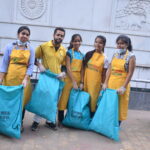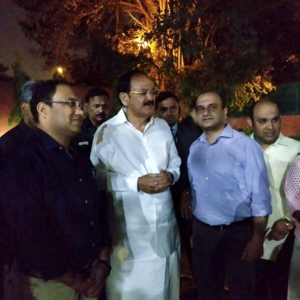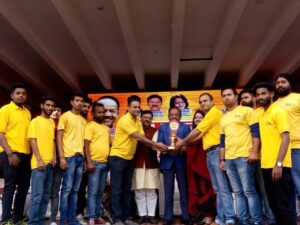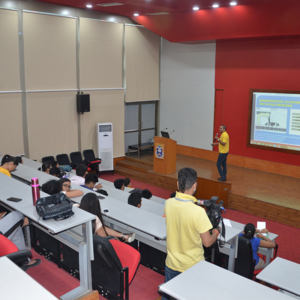Plastic & Plastic Trash – Curse of Modern Living!
We Indians love disposable plastic and love it more when we litter it all around. The moment you look around Indian streets/alleys, you will find plastic litter everywhere in the form of bags, bottles, wrappers, sachets strewn on the streets…Shame!Reasons for Plastic being so popular are: It is versatile, lightweight, moisture resistant, strong and relatively inexpensive. This fatal attraction to plastic, coupled with behavioral propensity of over-consuming, littering and thus polluting, has become a combination of lethal nature in our country.
While a lot has been reported about the ill effects of the use of plastics, its usage is rampant all over the country despite ban being imposed in many cities though that remains only in theory. The use of plastics poses hazards to the environment, human and animals’ health. Plastics take 500 to 1000 years to degrade due to the presence of complex polymers. Some of the harmful effects of plastic and plastic trash are as follows:
- Human bodies absorb chemicals added to plastics. Some of these compounds have been found to alter hormones or have other potential human health effects. On the other hand, the plastic containers, which are heated in microwave ovens, generate harmful chemicals that are probable carcinogens.
- Plastic buried deep in landfills can leach harmful chemicals that spread into groundwater. Also plastic trash in landfills, which can survive there for thousands of years, releases poisonous greenhouse gases, which gets absorbed in the atmosphere.
- The animals may swallow the food along with the polythene bags lying at roadsides, which so many times, becomes fatal.
- Plastics clog the drains due to improper disposal habits of inhabitants resulting in water logs during rains.


While the move has been implemented by the government of Delhi, Chandigarh, Karnataka, Uttar Pradesh majorly and in other states too, it is still being used on a daily basis in most of the towns and cities. The problem persists more at the grassroots level since the roadside vendors still give plastic bags to customers who happily accept them. The centre has also planned to ban the use of plastic bags less than 50 microns throughout the country within 6 months with stringent rules.
While plastic recycling started in late 1970s-early 1980s in India; the amount of plastic consumption far exceeds than the amount being currently recycled in India. Keep India Beautiful (KIB) in association with CII Young Indians – Delhi Chapter celebrated Gandhi Jayanti on October 2, 2016 with a cleanliness drive which emphasised on plastic recycling and reducing plastic pollution.
This drive was supported by Pom Pom which get these recyclables plastics converted back into a raw form to be used to create new different products. When a recycled material, rather than a raw material, is used to make a new product, natural resources and energy are conserved. This is because recycled materials have already been refined and processed once.
One recycled plastic bottle saves enough energy to power a 60-watt light bulb for 3 hours. This drive resulted in collection of more than 20 Kgs of plastic litter which was handed over to Pom Pom Team.Based on this KIBteam has tried to analyse the population and waste generation dataof Delhi and assess how the waste can be converted to useful energy.
As per details from Census 2011, Delhi has population of 1.68 Crores, an increase from figure of 1.39 Crores in 2001 census which means more consumption and thus more plastic waste generation. A report (2014) by the Waste-to-Energy Research and Technology Council (WTERT), shows that Delhi generates about 0.65kg of garbage/ Municipal Solid Waste (MSW) per capita every day of which plastic constitutes 10.14% (CPCB,2014).
Assumptions:
- Municipal Solid Waste (MSW) generated- 0.65 kg/capita/d (WTERT, 2014)
- Plastic waste (PW) – 10.14% of MSW (CPCB, 2014)
- Energy content of mixed plastics is 9585 KWh/Tonne (Source: British polythene Industries PLC)
- Lamps used for street lighting to be of 250W and being utilized for 12 hours per day.
- It has been assumed that currently only 20% of plastic trash is being recycled.
Another major problem is the use of plastic spoons, glasses, and plates for small social gatherings where huge amount of plastic waste is generated in a day.Several start-ups have also come up with the idea of organic cutlery. The glass, spoon, plates and even containers are made of bagasse, areca leaves, palm leaves which are biodegradable. Narayana Pessapaty, founder of Bakey’s Food Private Limited has gone a step ahead to produce cutlery of jowar, rice, and wheat flour which are biodegradable (takes 5-6days to biodegrade) and edible!! (www.bakeys.com/)
It’s time to sit up, take notice and stop doing small small things creating destruction in the environment. The following steps that can be undertaken to stop, reuse and recycle the plastic:
- Recycle plastic bottles
- Do not use plastic bags
- Promote the use of jute bags (the industry is dying a slow death), cloth and nylon bags
- Create awareness among citizens, especially the school students (as school projects)
- Use organic cutlery for social gatherings
- Avoid buying packaged drinking water (carry your own water bottles)

ALL CONTACTS
- A-148, 2nd Floor, Gujranwala Town, Delhi - 110009
- +91 98188 91223
- [email protected]
SUBSCRIBE
Never miss out on any news and updates by Keep India Beautiful.
- Keep India Beautiful. Copyright 2024




